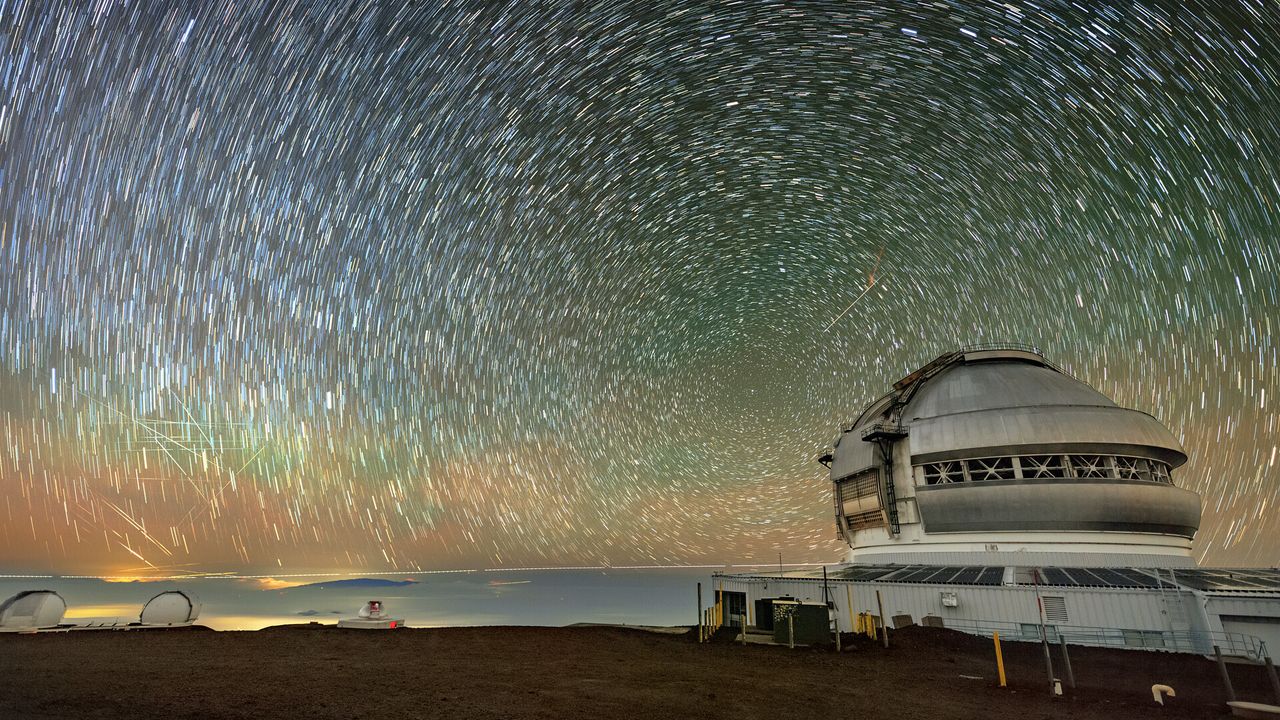
As one half of the International Gemini Observatory, the Gemini North telescope in Hawaii provides astronomers with a remarkable window into the distant universe. From studying growing stars to observing evolving galaxies, Gemini North plays a crucial role in expanding our understanding of the cosmos. Its twin, Gemini South, is located in the Atacama Desert in Chile. Together, these two telescopes form a powerful duo that allows astronomers to observe the entire sky from both the northern and southern hemispheres.
### What Is It?
In this long-exposure image, the lines of light streaking across the night sky are caused by both stars and satellites moving above the Earth. Satellite streaks, in particular, are becoming a growing issue for telescopes like Gemini North and Gemini South. These streaks can affect the accuracy of astronomical measurements and interfere with the data collected by researchers.
### Where Is It?
The Gemini North telescope is situated atop Mauna Kea in Hawaii. This location provides optimal viewing conditions with its high elevation, dry atmosphere, and minimal light pollution, making it an ideal site for cutting-edge astronomical observations.
### Why Is It Amazing?
In recent years, the number of satellites orbiting Earth has increased dramatically. Private companies such as SpaceX and Amazon are launching large satellite constellations to offer global broadband internet and other technological services. While these satellite networks bring important advances, their growing presence in the night sky also means more bright objects moving overhead.
For observatories like Gemini North and Gemini South, this presents a significant challenge. The reflected light from satellites can contaminate astronomical images, obscuring faint celestial objects or creating unwanted artifacts in valuable data. These disruptions make it harder to study phenomena such as distant galaxies, near-Earth asteroids, and the subtle signatures found in exoplanet atmospheres.
To address this issue, the U.S. National Science Foundation’s NOIRLab, which helps operate both Gemini North and Gemini South, co-hosts the Center for the Protection of the Dark and Quiet Sky (CPS). This global collaboration coordinates research and advocacy efforts aimed at preserving our natural view of the cosmos for future generations.
—
Want to learn more? Stay tuned for updates on efforts to balance technological advancements with the need to protect our night skies.
https://www.space.com/astronomy/stars-and-satellites-streak-over-gemini-north-telescope-space-photo-of-the-day-for-oct-17-2025


